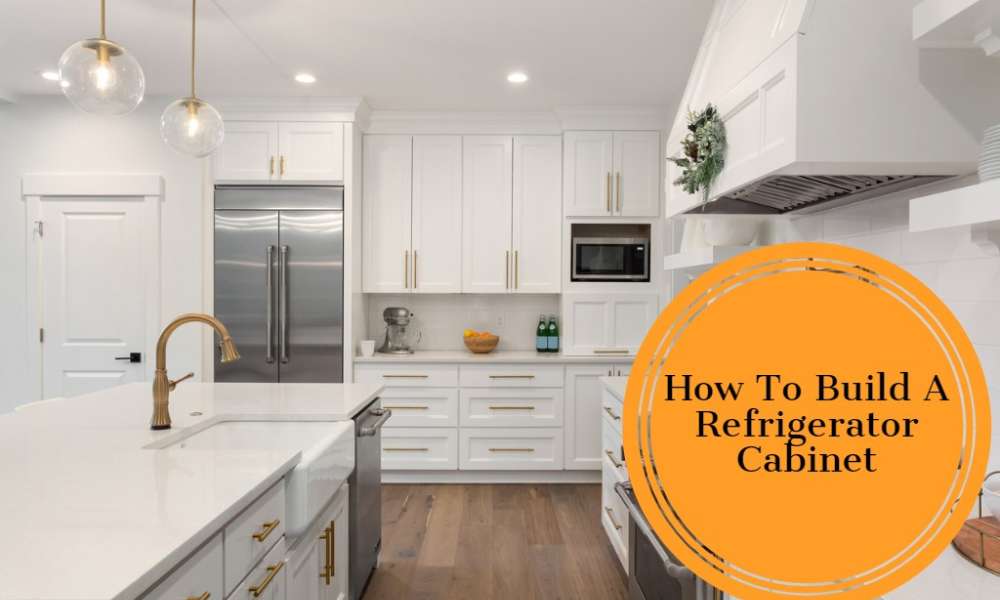Build a refrigerator cabinet is a rewarding and practical project that can enhance the functionality and aesthetics of your kitchen space. Whether you are looking to maximize storage or seamlessly integrate your refrigerator into your cabinetry, constructing a custom refrigerator cabinet can be a worthwhile endeavor. In this guide, We will provide you with A comprehensive outline of the steps involved in building A refrigerator cabinet, enabling you to embark on this project with confidence And precision. By following this outline, You will be able to create A custom cabinet that not only complements your kitchen design but also optimizes the efficiency and organization of your refrigerator space. So let’s dive in and discover how you can construct your very own refrigerator cabinet.
What Is A Refrigerator Cabinet?
A refrigerator cabinet, also known as a refrigerator enclosure or refrigerator surround, is a custom-built structure designed to house and integrate a refrigerator into the cabinetry of a kitchen. It is essentially a dedicated space that surrounds and supports the refrigerator, providing a seamless and cohesive look with the surrounding kitchen cabinets. The cabinets not only enhances the overall aesthetics of the kitchen but also serves functional purposes such as maximizing storage space and improving the organization of the refrigerator area. By building a refrigerator cabinet, you can customize the design and dimensions to fit your specific needs and create a unified and stylish look for your kitchen.
How Is Best Option Use A Refrigerator Cabinet
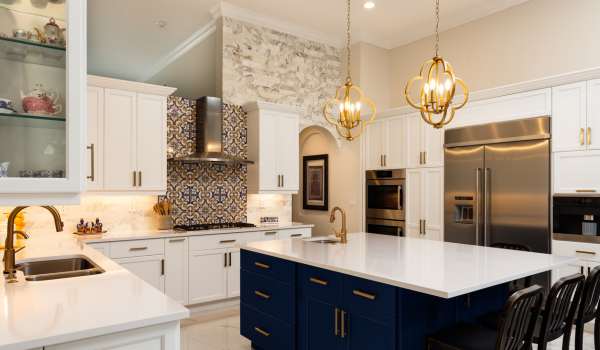
Using a refrigerator cabinet is the best option for seamlessly integrating your refrigerator into your kitchen space. It not only enhances the overall aesthetics by providing a cohesive look with the surrounding cabinetry but also optimizes storage capacity and improves organization. Customizable in design, a refrigerator cabinets allows you to tailor its dimensions, materials, and features according to your specific needs, resulting in a personalized storage solution. Additionally, it helps reduce noise levels and creates a more efficient and pleasant kitchen environment. Overall, a refrigerator cabinet offers the ideal combination of functionality and style, making it a highly advantageous choice for homeowners.
Importance Of Build A Refrigerator Cabinet
Aesthetic Appeal: A refrigerator cabinet helps create a visually pleasing and cohesive look in the kitchen. By integrating the refrigerator into the cabinetry, it eliminates the appliance’s standalone appearance, giving the kitchen a more streamlined and sophisticated appeal.
Space Optimization: Constructing a refrigerator cabinet allows for efficient utilization of kitchen space. The cabinets can be customized to fit the exact dimensions of the refrigerator, maximizing storage capacity and ensuring that no space is wasted.
Enhanced Organization: With a dedicated refrigerator cabinet, organization and accessibility are greatly improved. The cabinets provides additional storage options such as shelves, drawers, or compartments, allowing for better organization of food items, condiments, and other essentials.
Customization Options: Build a refrigerator cabinet offers the flexibility to customize its design, materials, and features to match your kitchen style and preferences. You can choose materials that complement existing cabinetry, select hardware finishes, and incorporate design elements that align with your overall kitchen aesthetics.
Noise Reduction: By enclosing the refrigerator within a cabinet, noise levels can be significantly reduced. The cabinets acts as a sound barrier, minimizing the operational sounds produced by the refrigerator and contributing to a quieter and more comfortable kitchen environment.
Added Value: A well-designed refrigerator cabinet can add value to your home. Potential buyers often appreciate the seamless integration and functional benefits of a custom cabinet, making it an attractive feature that can enhance the overall appeal and marketability of your property.
Planning And Preparation

1. Measurements And Dimensions
Begin by accurately measuring the width, height, And depth of your refrigerator. This will serve as the foundation for determining the cabinet’s size. Additionally, make sure to account for proper clearance space around the refrigerators to ensure adequate ventilation and ease of movement.
2. Material Selection
Choose suitable materials for constructing the cabinets. Wood is a common choice due to its durability and versatility, but other materials like plywood or medium-density fiberboard (MDF) can also be used. Consider the durability of the material, its ability to withstand the weight of the refrigerator, and select a finish that complements your kitchen’s aesthetics.
3. Tools And Equipment
Compile a list of necessary tools and equipment for the construction process. This may include saws (such as a circular saw or table saw), drills, measuring tools (like a tape measure or square), clamps, screws, and other relevant items. Ensure you have safety equipment like goggles and gloves to protect yourself during the construction process.
Designing The Cabinet

Begin by creating a rough sketch of your desired cabinets design. Include accurate dimensions of the cabinets, considering the width, height, and depth based on the refrigerator’s measurements. Make sure to also incorporate clearances around the refrigerator for proper ventilation and ease of access. This sketch will serve as a visual guide throughout the construction process.
2. Determining The Structure
Decide on the basic structure of your refrigerators cabinets. Two common options are frame construction and box construction. Frame construction involves building a sturdy frame and attaching panels to it, while box construction entails creating a solid box-like structure. Consider the pros and cons of each method, as well as your skill level and available tools.
Materials And Cutting
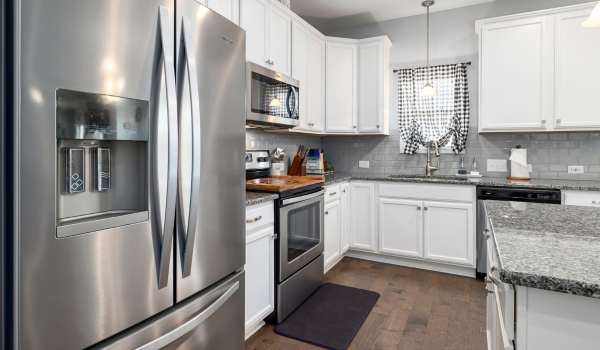
1. Acquiring Materials
Once you have a clear plan and design for your refrigerator cabinets, gather all the necessary materials. Purchase the required wood or other chosen materials based on the dimensions and design specifications of your cabinets. Ensure that the materials are of suitable quality, sturdy enough to support the cabinet’s structure and aesthetic requirements. Additionally, acquire the necessary hardware such as screws, hinges, handles, and any other components needed for assembly.
2. Cutting The Components
Using appropriate tools such as a saw (e.g., circular saw or table saw), carefully cut the wood or other chosen materials into the required pieces according to the measurements specified in your design plan. Ensure accuracy in your cuts to achieve precise fit and alignment during assembly. Take your time and follow the design plan diligently to avoid any mistakes.
3. Sanding And Finishing
After cutting the components, smooth any rough edges or surfaces using sandpaper. This step ensures a clean and polished appearance while preventing splinters or sharp edges. Once the surfaces are smooth, apply the desired finish or paint to protect the wood and enhance the overall look of the cabinet. Consider using a finish that is appropriate for kitchen use and matches your preferred style.
Assembly And Installation
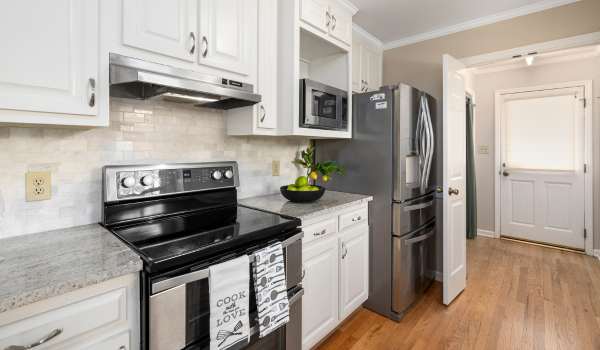
1. Join The Cabinet Components Using Appropriate Techniques (E.G., Screws, Nails, Or Glue)
Assemble the cabinet components using the appropriate joining techniques. Depending on your chosen construction method, use screws, nails, or glue to securely connect the pieces together. Ensure that the joints are tight and the connections are sturdy, reinforcing them if necessary. Take care to align the components accurately as you assemble, referring to your design plan for guidance.
2. Ensure The Cabinet Structure Is Stable And Secure
Reinforce the stability of the cabinet structure. Consider adding corner braces, support brackets, or additional fasteners as needed to enhance the cabinet’s strength and stability. This step is crucial, as it ensures that the cabinetry can withstand the weight of the refrigerators and any items stored inside without compromising its structural integrity.
3. Create A Suitable Opening In The Cabinet For The Refrigerator
Determine the ideal location and dimensions for the opening in the cabinets that will accommodate the refrigerators. Use precise measurements to mark the area, and then carefully cut out the opening using appropriate tools, such as a jigsaw or router. Take your time to achieve clean, accurate cuts and ensure that the edges are smooth and free of any splinters.
4. Place The Refrigerator Securely In The Designated Space
Carefully position the refrigerator into the designated space within the cabinets. Enlist the help of others if needed, as refrigerators can be heavy and require proper handling. Take precautions to protect both the refrigerators and the cabinetry during this process, using padding or blankets to avoid any scratches or damage.
5 Verify Proper Alignment And Clearance Around The Refrigerator
Check the alignment of the cabinetry and refrigerator to ensure they are properly positioned and level. Use a level tool to verify horizontal and vertical alignment. Confirm that there is sufficient clearance around the refrigerators for proper ventilation, allowing heat to dissipate effectively. Ensure that doors and drawers on the refrigerators can open and close smoothly without obstruction.
Finishing Touches
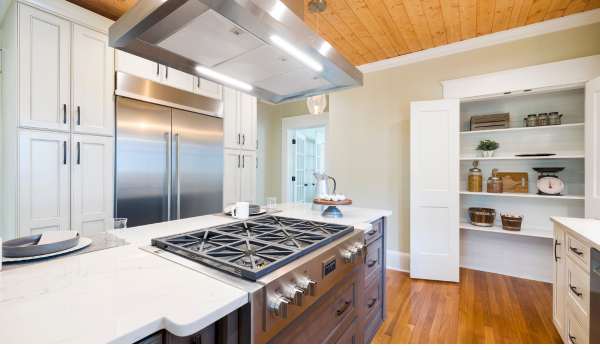
1. Install Cabinet Doors Using Hinges Or Other Suitable Hardware
Carefully install the cabinet doors using appropriate hinges or hardware. Ensure that the hinges are properly aligned and securely attached to both the doors and the cabinets frame. Use a level to confirm that the doors hang straight and are not sagging or misaligned. Check the operation of the doors, ensuring they open and close smoothly without any resistance or binding.
2. Ensure Proper Alignment And Functionality Of The Doors
Take the time to meticulously align the cabinetry doors. Use shims or adjust hinges as needed to achieve consistent gaps and a uniform appearance between the doors and the cabinets frame. Test the functionality of the doors by opening and closing them multiple times, checking for any obstructions or uneven movement. Make any necessary adjustments to ensure they operate flawlessly.
3. Clean The Cabinet And Remove Any Debris
Perform a thorough cleaning of the cabinets, both inside and outside. Use a vacuum or damp cloth to remove any sawdust, dirt, or debris that may have accumulated during the construction process. Pay attention to corners, edges, and hard-to-reach areas. For any stubborn stains or residue, use a mild cleaner or wood-specific cleaning product following the manufacturer’s instructions.
4. Check For Any Necessary Adjustments Or Repairs
Conduct a final inspection of the cabinet, carefully examining all joints, corners, and surfaces. Tighten any loose screws or hardware and ensure they are securely fastened. Check for any uneven surfaces, rough edges, or imperfections that may require sanding or touch-up. Address any repairs or adjustments promptly to achieve a polished and professional finish.
The Final Touches
building a refrigerator cabinet involves a series of steps that require attention to detail and precision. From planning and preparation to assembly and installation, each stage contributes to creating a functional and aesthetically pleasing cabinets. By focusing on accurate measurements, precise cuts, and meticulous alignment, you can ensure a high-quality finished product that seamlessly integrates the refrigerators into your kitchen. Embrace the satisfaction of a job well done and take pleasure in the functionality and customized appeal of your finished cabinets, enhancing your kitchen space for years to come.
